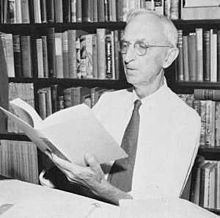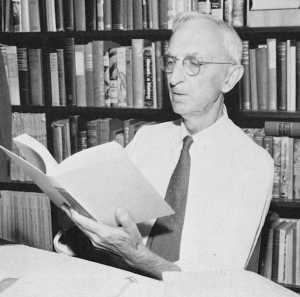Name Ralph Kuykendall Role Historian | ||
 | ||
Books The Hawaiian Kingdom | ||
Ralph Simpson Kuykendall (April 12, 1885 – May 9, 1963) was an American historian who served as the trustee and secretary of the Hawaiian Historical Society from 1922 to 1932. Kuykendall also served as professor of history at the University of Hawaii at Manoa. He is most noted as a historian of the Hawaiian Islands, South Pacific, and Pacific Northwest.
Contents

Early life
Kuykendall was born in Linden, California. His parents Reverend John Wesley Kuykendall and Marilla Persis Pierce were both Methodist missionaries and descendants of Dutch settlers from New York. In 1919 Kuykendall married Edith Clare Kelly from Hollister, California. They had two sons, John Richard Kuykendall and Delman Leur Kuykendall.
Kuykendall attended California’s College of the Pacific where he was active in campus life as a debater, editor of the college newspaper, and student body president. He graduated in 1910 with a Bachelor of Arts degree. Following his graduation from 1911–1912, Kuykendall taught at College Park Academy and started his graduate studies in history at Stanford University. After a year of study, Kuykendall took a break and moved to Florida to work with his brother at a newspaper. In 1916 Kuykendall returned to California to work as a field research agent for the California Historical Survey Commission. He apparently succeeded at collecting and assessing the material he obtained in the field and compiling his results into cohesive works.
Kuykendall had resumed his post-graduate work at the University of California at Berkeley. In 1919 Kuykendall completed his M.A. thesis entitled History of Early California Journalism. He had intended to complete his doctorate when he was again awarded the Native Sons of the Golden West fellowship to do research in the Archives of Seville, Spain. While in Spain, Kuykendall was tapped to be the executive secretary of the newly established Hawaiian Historical Commission. He left Spain in 1922.
Professional life
Ralph Kuykendall arrived in Honolulu, Hawaii on June 19, 1922. As executive secretary of the Hawaiian Historical Commission, Kuykendall was expected to research and complete three historical works. The first was a school textbook on Hawaiian history. The second was a history on Hawaii’s role in World War I. And the third was a comprehensive and authoritative history of the Hawaiian people. Kuykendall mostly relied upon the historical collections at the Territorial Archives, the Library of Hawaii and other museums. Earlier histories were written from the perspectives of the missionaries, or the missionaries, or traders and foreign governments. Kuykendall wanted to incorporate all of these perspectives
Kuykendall’s first book, A History of Hawaii, was approved by the Hawaii State Legislature in 1925. It co-authored with the help of Dr. Herbert E. Gregory who served as the Director of the Bernice P. Bishop Museum. A History of Hawaii documents the early beginnings of the Hawaiian kingdom to United States territory. The year 1926 marked its first use in Hawaii classrooms.
The second book, titled Hawaii in the World War, was co-authored with Lorin Tarr Gill. Published in 1928, Hawaii in the World War details the territory’s military and domestic involvement in the war.
The final, third book, an accurate history of the Hawaiian people, was by far the most difficult to complete. The work was to be a narrative history divided into three sections; 1) ancient history prior to 1778, 2) Hawaiian monarchy from 1778 through the overthrow of 1893, 3) the transition from provisional government to republic to territory. Kuykendall drew largely from the archives of Washington D.C., the Oregon Historical Society, British Columbia, Harvard College Library, Washington State archives, the Mormon archives in Salt Lake City, Bancroft Library, and the California State Library. He also acquired new collections of documents, newspapers, periodicals, books, and manuscripts.
In 1923 Kuykendall accepted a position as history professor at the University of Hawaii in Manoa. Kuykendall continued to serve as the executive secretary of the Hawaiian Historical Commission until its dissolution in 1932. He published a few more books, including the trilogy The Hawaiian Kingdom. Volume 1: Foundation and Transformation, 1778-1854, published 1938 is about the formation of the Hawaiian Islands under a single kingdom and the development of the Hawaiian nation. The book spans the first half of the Kamehameha Dynasty; Kamehameha I, Kamehameha II, Kamehameha III. Volume 2: Twenty Critical Years, 1854-1874, published 1953, is about the “middle period” after the establishment of the Kingdom. It is about international relations, immigration, changing economics and society. Kuykendall described this period as “neglected” by academics. The book spans the last half of the Kamehameha Dynasty; Kamehameha IV, Kamehameha V, and Lunalilo and his brief dynasty. Volume 3: The Kalakaua Dynastism, 1874-1893, published 1967, is about the decline of the Kingdom, Reciprocity Treaty of 1875, and eventual overthrow. The book spans the Kalākaua Dynasty; Kalākaua, Liliʻuokalani. Volume 3 was one of Kuykendall′s posthumous publications. Also, in 1948, Ralph Kuykendall and A. Grove Day published Hawaii: A History From Polynesian Kingdom to American Statehood.
Kuykendall was diagnosed with cancer in the early 1960s and he moved to Tucson, Arizona to live with his son. Kuykendall continued to work up until his death in 1963, he left several unfinished manuscripts. The University of Hawaii at Manoa named the building in which the English Department resides after Kuykendall.
